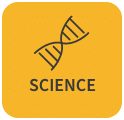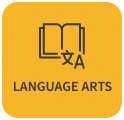- Ontario:
- Math
- Language Arts
- Social Studies
- Science
Ontario
Activities for Ontario Grade 2 Science Curriculum (2022)
Expectations are in black and skills are in blue. Click on the name of the skill to practice that skill.
Please check back as we are always adding more content!
2.B Life Systems – Growth and Changes in Animals
B1. Relating Science and Technology to Our Changing World
B1.1 examine impacts that animals can have on society and the environment, and describe some ways in which any negative impacts can be minimized
B1.2 assess impacts of various human activities on animals and the places where they live, and describe practices that can minimize negative impacts
B2. Exploring and Understanding Concepts
B2.1 compare physical characteristics of various animals, including characteristics that are constant and those that change
Digital Resources
• Lesson 01 – Mammals Are Animals
• Lesson 02 – Kinds of Animals
• Lesson 04 – Honeybees and Wasps
• Lesson 07 – Dinosaurs Big and Small
Printable Worksheets
B2.2 describe the locomotion of various animals
B2.3 describe the life cycle of a variety of animals, including insects, amphibians, birds, and mammals
Digital Resources
• Lesson 09 – Life Cycle of a Brown Bear
• Lesson 10 – Life Cycle of a Monarch Butterfly
Printable Worksheets
B2.4 compare changes in the appearance and behaviour of various animals as they go through a complete life cycle
B2.5 describe adaptations, including physical and/or behavioural characteristics, that allow various animals to survive in their natural environment
Digital Resources
• Lesson 11 – Animals Are Built to Live
• Lesson 12 – Saving Food for Winter
• Lesson 15 – Animals Adapt to the Seasons
• Lesson 16 – Squirrel Adaptations
• Lesson 17 – Flying Without Wings
• Lesson 18 – The Sounds of Birds
Printable Worksheets
2.C Matter and Energy – Properties of Liquids and Solids
C1. Relating Science and Technology to Our Changing World
C1.1 assess practices related to the use, storage, and disposal of liquids and solids in the home in terms of the effects on personal health and safety and on the environment, and suggest ways to improve these practices
C1.2 assess the impacts of changes of state of liquids and solids on humans and on environments
C2. Exploring and Understanding Concepts
C2.1 identify various types of matter in natural and built environments as liquids or solids
C2.2 describe the properties of liquids and solids
C2.3 describe properties of liquid water and solid water, and identify the conditions that cause changes from one state to the other
Digital Resources
• Lesson 05 – Experiment: Big Stuff
• Lesson 08 – Experiment: The Layered Look
Printable Worksheets
C2.4 identify conditions in which the states of liquids and solids remain constant and conditions that can cause their states to change
C2.5 describe some ways in which liquids and solids can be combined to make useful mixtures
C2.6 classify solid objects and materials in terms of their buoyancy and in terms of their ability to absorb or repel water
Digital Resources
• Lesson 06 – Experiment: Sink or Float?
• Lesson 07 – Experiment: Soak It Up!
• Lesson 10 – Liquids and Solids Every Day
Printable Worksheets
C2.7 explain the meaning of international symbols that give us information on the safety of substances
2.D Structures and Mechanisms – Simple Machines and Movement
D1. Relating Science and Technology to Our Changing World
D1.1 assess the impact of simple machines on the daily lives of people in various communities
D1.2 assess the impact on the environment of technologies that use simple machines to facilitate movement
D2. Exploring and Understanding Concepts
D2.1 describe different ways an object can move
Digital Resources
• Lesson 12 – Things with Wheels
• Lesson 13 – Moving in a Wheelchair
• Lesson 14 – Sliding and Rolling
• Lesson 15 – Things That Spin
Printable Worksheets
D2.2 identify ways in which the position of an object can be changed
D2.3 identify the six basic types of simple machines: lever, inclined plane, wedge, pulley, wheel and axle, and screw
Digital Resources
• Lesson 02 – Inclined Planes at Work
• Lesson 06 – Wheels, Axles, and Pulleys at Work
Printable Worksheets
• Screws
• Levers
D2.4 describe ways in which each type of simple machine is used in daily life to make tasks easier
Digital Resources
• Lesson 07 – Simple Machines Working Together
• Lesson 08 – Living with Machines
• Lesson 10 – Up and Down in Elevators
• Lesson 11 – Elevators and Escalators
Printable Worksheets
D2.5 compare, qualitatively or quantitatively, the force required to move an object using various simple machines to the force required to move the object without using a simple machine
2.E Earth and Space Systems – Air and Water in the Environment
E1. Relating Science and Technology to Our Changing World
E1.1 assess the impact of human activities on air and water, taking various perspectives into consideration, including those of First Nations, Métis, and Inuit, and plan a course of action to protect the quality of the air and/or water in the local community
E1.2 assess their personal and household uses of water, and create a plan to use water responsibly
Digital Resources
• Lesson 26 – How We Use Water at Home
• Lesson 27 – Use Water Wisely
Printable Worksheets
E1.3 examine the availability of fresh water and drinking water around the world, and describe the impact on communities
E2. Exploring and Understanding Concepts
E2.1 demonstrate an understanding of the key properties of air and water
Digital Resources
• Lesson 04 – Experiment: Does Air Take Up Space?
• Lesson 06 – Air Moves At Home
• Lesson 08 – Changes in the Air
• Lesson 11 – How Does Wind Form?
• Lesson 16 – More About Water
Printable Worksheets
• Water
E2.2 identify sources of water in the natural and built environments
E2.3 describe the stages of the water cycle, including evaporation, condensation, precipitation, and collection
E2.4 identify the three states of water in the environment, and describe how temperature changes affect the state of water within the water cycle
E2.5 describe ways in which living things, including humans, depend on air and water
Digital Resources
• Lesson 07 – Experiment: Make a Wind Sock
• Lesson 09 – How Do We Use Air?
• Lesson 13 – Wind Makes Things Move
• Lesson 23 – Lighthouses Keep Ships Safe









